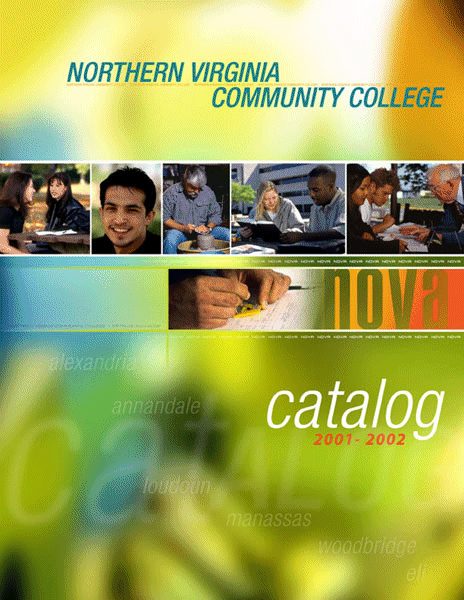
Instructional Programs
[ NVCC Home Page | Catalog Search | Table of Contents | Instructional Programs | Divisions | Previous Page | Next Page ]
Purpose: The curriculum is designed to permit the student to transfer into a baccalaureate degree program in Electrical Engineering (EE). All B.S.E.E. degree-granting colleges/universities require specific preparation in the sophomore year for EE majors.
Transfer Information: Students are advised to work closely with the faculty and counseling staff for program and course scheduling. Electives should be chosen carefully to meet requirements of transfer institution. The responsibility for proper course selection rests with the student.
Recommended Preparation: High school courses: 4 units of English, 2 units of algebra, 1 unit of geometry, 1 unit of trigonometry, and 1 unit of laboratory science (chemistry or physics).
Completion Requirements: Grades of C and above are required in courses that are intended to be transferred for credit to a baccalaureate degree-granting college/university.
| First Year | 1st Semester | 2nd Semester | ||||
| CHM | 111 | College Chemistry I or | ||||
| CHM | 126 Chemistry for Engineers | 4 | ||||
| EGR | 120 | Introduction to Engineering | 2 | |||
| ENG | 111 | College Composition I | 3 | |||
| MTH | 173 | Calculus/Analytic Geometry I | 5 | |||
| 1 PED | 116 | Lifetime Fitness & Wellness | 1 | |||
| STD | Elective | 1 | ||||
| EGR | 126 | Computer Programming for Engineers or | ||||
| CSC | 201 Computer Science I | 3-4 | ||||
| EGR | 255 | Electric Circuits Laboratory | 1 | |||
| ENG | 112 | College Composition II | 3 | |||
| MTH | 174 | Calculus/Analytic Geometry II | 5 | |||
| PHY | 241 | University Physics I or | ||||
| PHY | 231 General University Physics I | 4-5 | ||||
| Total Credits/Semester | 16 | 16-18 | ||||
| Second Year | 1st Semester | 2nd Semester | 3rd Semester | ||||
| EGR | 140 | Engineering Mech. - Statics | 3 | ||||
| EGR | 251 | Basic Electric Circuits I | 3 | ||||
| MTH | 277 | Vector Calculus | 4 | ||||
| 1 PED/RPK | 1 | ||||||
| 2 ___ | Social Science Elective | 3 | |||||
| SPD | Elective | 3 | |||||
| EGR | 252 | Basic Electric Circuits II | 3 | ||||
| 3 ___ | Humanities/Fine Arts Elective | 3 | |||||
| PHY | 242 | University Physics II or | |||||
| PHY | 232 General University Physics II | 4-5 | |||||
| 2 ___ | Social Science Elective | 3 | |||||
| 4 EGR | Elective | 2-3* | |||||
| EGR | 265 | Digital Elec. & Logic Design | 4* | ||||
| MTH | 285 | Linear Algebra | 3* | ||||
| MTH | 291 | Differential Equations | 3* | ||||
| MTH | 292 | Topics in Differential Equations | 3* | ||||
| Total Credits/Semester | 17 | 13-14 | 15-16 | ||||
Total credits for the A.S. Degree in Engineering with a Specialization in Electrical Engineering = 62-65.
To graduate from a degree program, students entering NVCC Fall 1999 or later must demonstrate computer competency skills as described in the Degree Requirements section of the Instructional Programs of this catalog.
1 The PED requirement may be met by one of the following options: PED 116, 2 cr.; PED 116, 1 cr. plus a PED activities course, 1 cr.; or PED 116, 1 cr. plus RPK 205, 208, 216, or 225. PED 116 is offered as both a 1-credit and a 2-credit course.
2 Must include one semester of history (American or Western Civilization) plus a second semester of history, economics, psychology, or sociology.
3 The Humanities/Fine Arts elective may be selected from art (ART), English (ENG), humanities (HUM), music (MUS), philosophy (PHI), religion (REL), sign communication (SCM), speech and drama (SPD), or foreign languages courses. Elective should be selected with advice of a counselor or faculty advisor to meet requirements of transfer institution.
4 EGR 206 (2 credits) required at VPI and desirable elsewhere. EGR 266 is required for EE curriculum at all universities.
* These courses are not required for the A.S. degree; however, completion of them is desirable for transfer as a junior in Electrical Engineering. Consult the requirements of your transfer institution.
Last revised: Monday, May-18-2015 10:25
Comments to: Programming Support Services